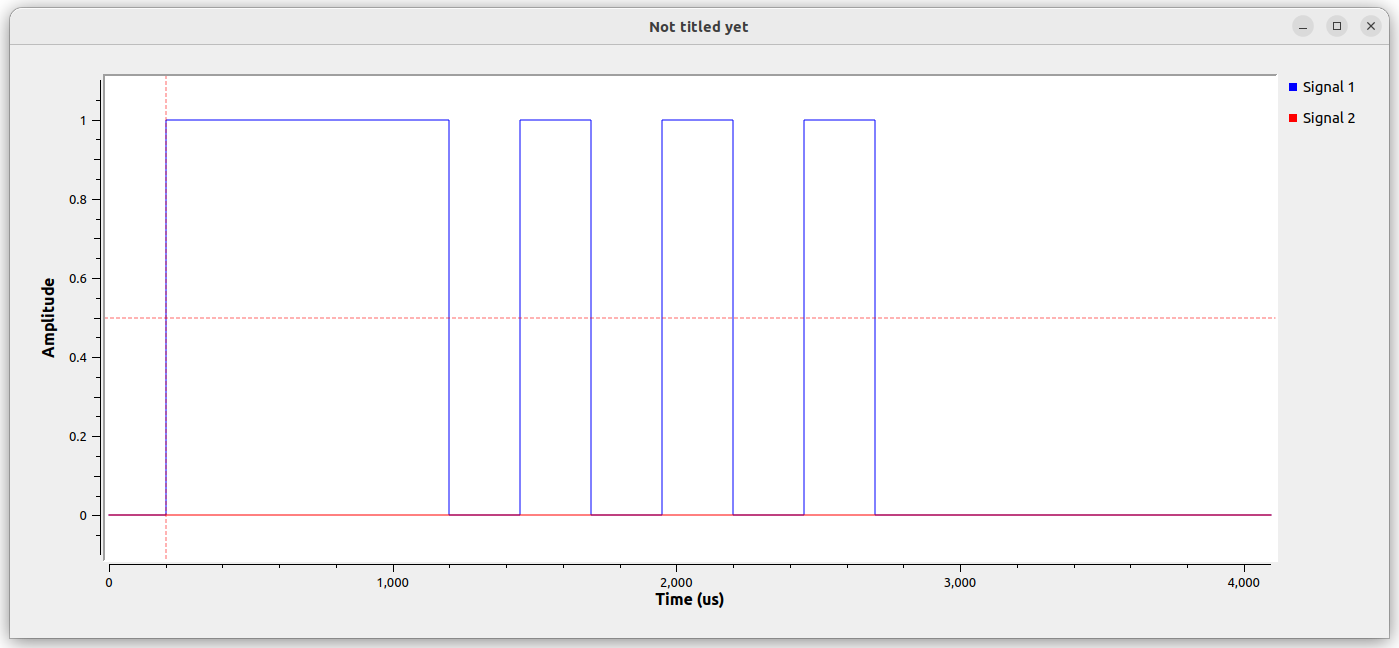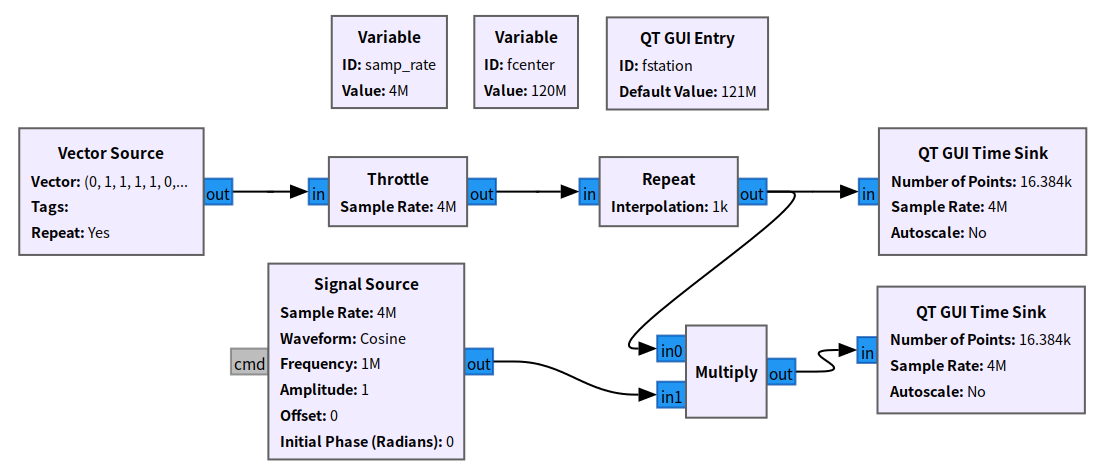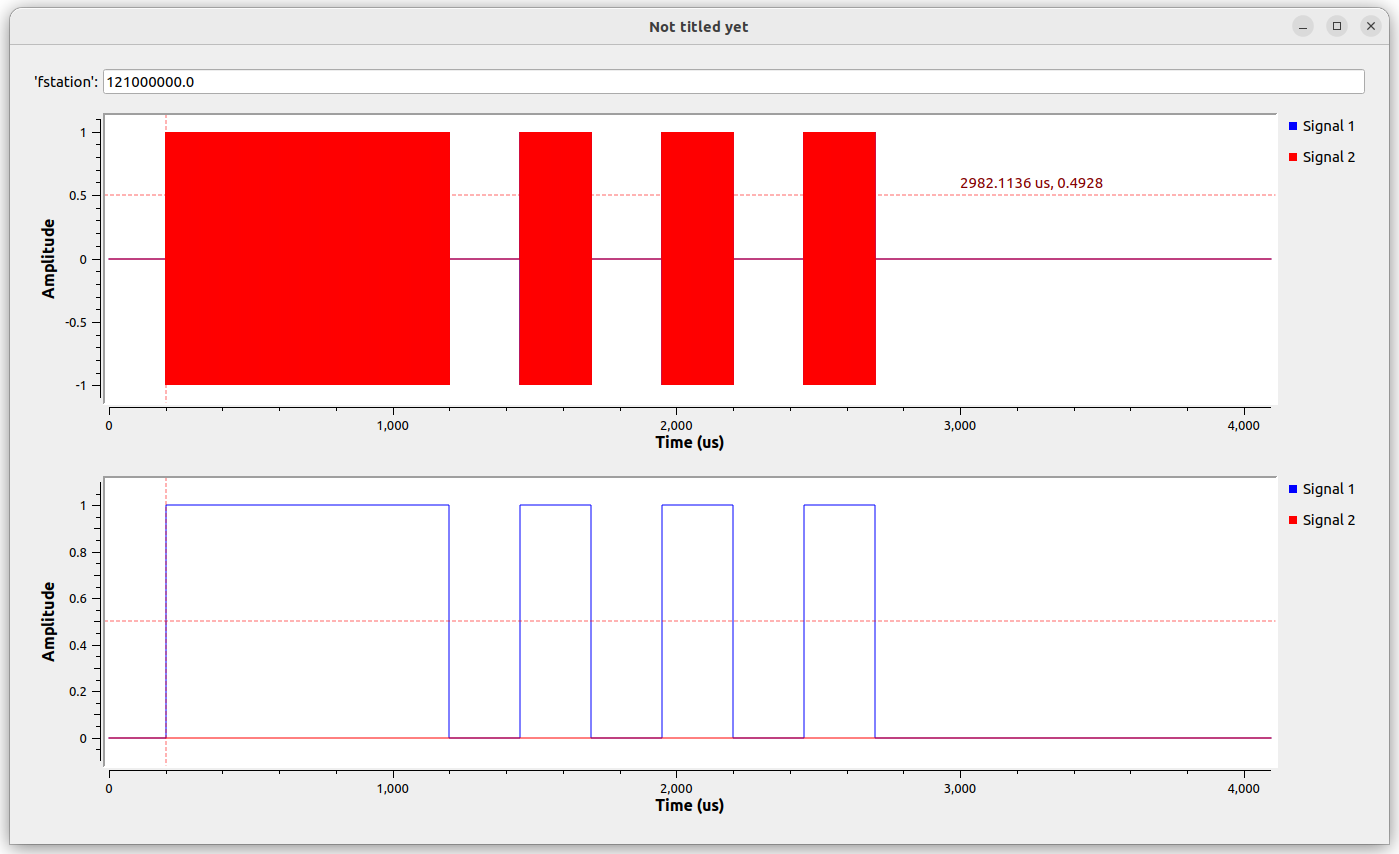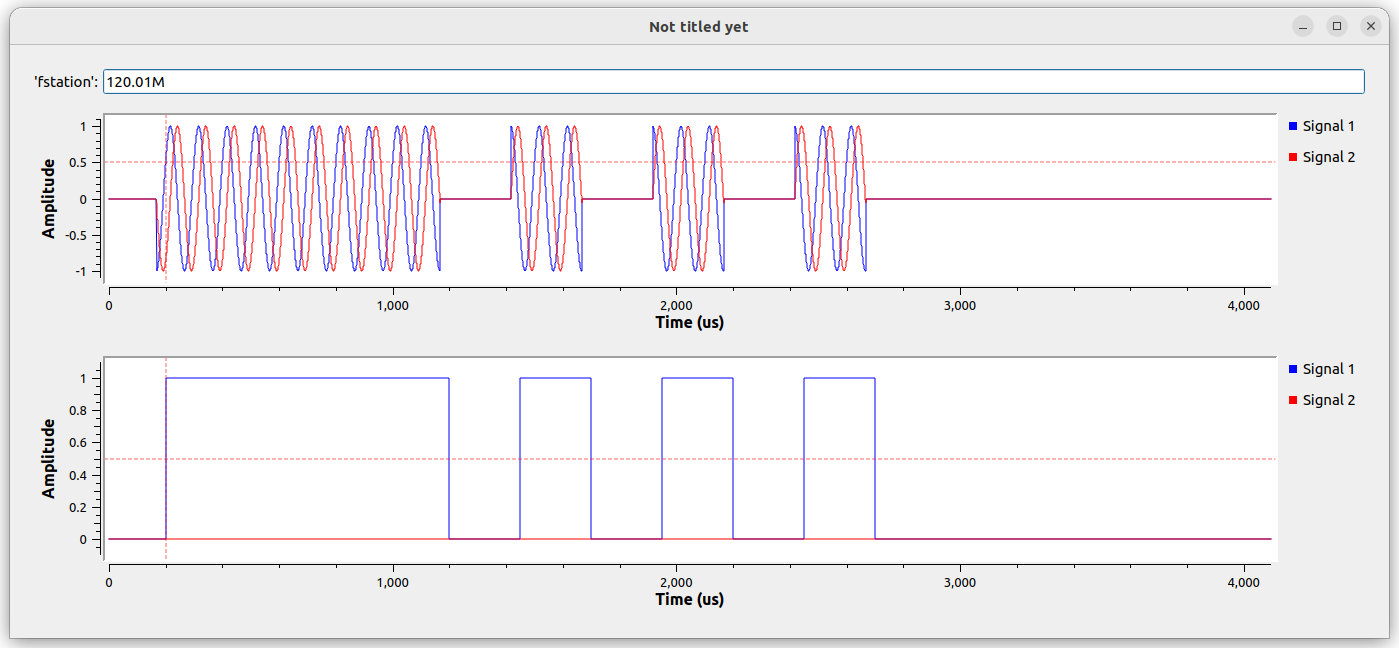Modulation
Binary Signal
We first construct a system that generates a binary signal, as shown below:

Where Vector Source is mainly used to set vector data, Repeat is mainly used to repeat the same signal. The main parameters of each module are as follows:
- samp_rate: 4e6
- Vector Source:
(0,1,1,1,1,0,1,0,1,0,1,0,0,0,0,0) - Rpeat: 1000
- Time Sink:
- Number of Points=16384,
- Y: -0.1~1.1,
- Trigger Mode: Auto,
- Trigger Level: 0.5,
- Trigger Delay: 0.0002
The execution result is shown below:

Upon closer inspection, it can be seen that the signal changes in the above figure are consistent with the transmitted signal, and each bit has a certain duration.
Modulation
Next, we will modulate the binary signal described above. Assuming that the final transmitted signal has a frequency of fstation, which is 121 MHz by default, and the transmission is uniformly concentrated at the center frequency fcenter=120 MHz. Modify the above system architecture as follows:

The added module parameters are as follows:
- Variable: fcenter=120e6
- GUI Entry: fstation, default=121e6
- Signal Source: freq=fstation-fcenter
- Time Sink: same as the other Time Sink
The execution result is shown below:

The red part in the above figure is very dense, you can use the mouse to select a range to observe, and you will see the modulated signal inside.
We can also change fstation to 120010000 (120.01M), and we will get the following result:

Exercise 1
- What is the duration of each 0 and 1 signal in the above execution results? Why do we get this result?
- Why do we get the final graph when we change fstation to 120.01M?
